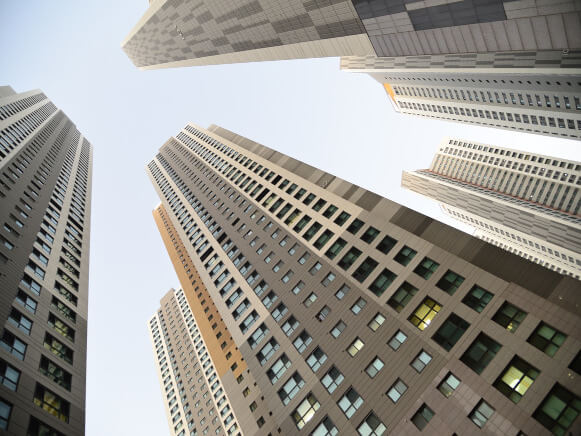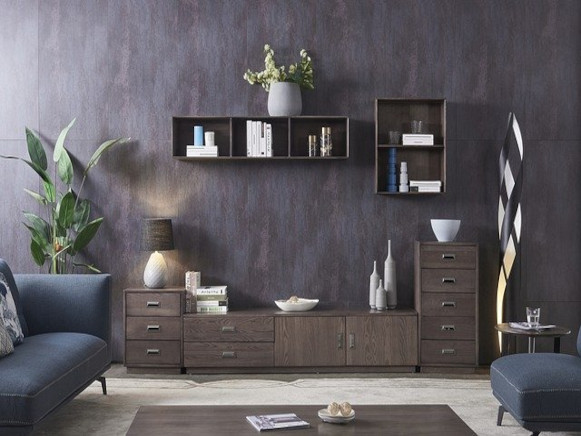HoloLens for real estate marketing
The use of AR data glasses such as HoloLens shows how the real estate industry can combine the future and the present. Using augmented reality to sell real estate is certainly one of the fields of application best suited for the use of an augmented reality app for HoloLens.
Investors and future builders can literally get a three-dimensional picture of the planned building projects even before the starting shot for the project has been fired. And not just in a catalogue, with a scaled-down model or as part of a virtual animation, but directly on site on the as yet undeveloped building plot. For the real estate industry, however, there is even more potential in the HoloLens.
What can AR data glasses do for the real estate industry?
Anyone who wants to use augmented reality to market real estate to end customers can do so easily with the HoloLens. But AR presentations can also be implemented for information for large groups of investors, independent of location and virtually worldwide. At the same time, video conferences and agreements with planning departments and contractors can be coordinated much more easily.
But this applies more to architecture and construction planning. When it comes to marketing AR properties, sellers have many more options at their disposal than in the past. If, for example, a house is offered for sale, the viewing with the prospective buyers can be very individualised in the future.

Furnish your home with augmented reality

Empty rooms always convey a false sense of space. The disappointment is often great when it turns out in reality that the desired furniture does not fit into the new home as well as expected. Thanks to HoloLens and augmented reality, prospective buyers can view 3D holograms of their own furniture (or even new furniture directly from a retailer’s sales catalogue) in the desired environment.
Even measuring is made much easier with HoloLens data glasses, as the room dimensions and the exact dimensions of the furniture available as 3D objects are already known. There are also new possibilities for interior design. Almost everyone knows the problem of making wrong decisions when choosing a suitable wall colour. Using colour charts or even painting a small section of the wall can never reflect the complete colour impression. With augmented reality wall paint, flats can be viewed partially or completely in all possible colours without having to move any furniture.
The same applies to floor coverings. Trying out different options has never been so easy and clean. In this respect, an augmented reality app differs fundamentally from the static display on pictures or post-edited videos. Through the data glasses, the user can have a real experience in real time, allowing the full effect of the new colour on the wall or certain furnishings to really unfold.
PLANSYSTEME
DO YOU HAVE ANY QUESTIONS? FEEL FREE TO CONTACT US!
Do not hesitate to contact us. In a first non-binding conversation we will find out how we can help you and whether our solutions fit you. We look forward to hearing from you!
Large projects are best represented with AR
Often, large construction projects meet with scepticism from the population or certain interest groups. Airport companies, for example, go to great lengths to explain the construction of new terminals using computer animations and extensive models.
The acceptance of such construction projects stands and falls with the quality of the presentation. If future users and residents can experience projects with their own eyes on site before construction begins, this helps to form a well-founded opinion. For the initiators of the projects, on the other hand, there are completely new opportunities to communicate their concerns. Changes can be implemented at short notice and different scenarios can be depicted. Flexibility in presentation is another advantage of using HoloLens and AR apps for 3D representations.
By the way, this does not only apply to new buildings. If existing buildings are to be renovated or listed buildings upgraded, the end result is often only very abstractly defined. Concept drawings or computer animations do not change this. Does the new façade really match the character of the old building? What is the visual impact of neon signs or the installation of a solar system? What could the house look like after a conversion? All these questions can be answered during a walk-through before the actual construction project begins using HoloLens and augmented reality. In real time and with the option of incorporating changes at any time.

Conclusion: The real estate industry will no longer want to do without augmented reality with HoloLens
Until now, the actual impression that a building project creates after completion could only be inadequately realised with models, images and animations on the computer. What it feels like to stand in a large hall that has yet to be built, on the other hand, can be experienced directly with data glasses.
Whether large church windows or the design of a multi-storey car park – in the real estate industry AR can significantly improve the chances of sales and success for projects. The acceptance of controversial building projects that require explanation can also be increased with AR representations. Last but not least, the HoloLens is also used on a smaller scale for real estate, for example in questions of interior design or the decision for a certain wall colour.


